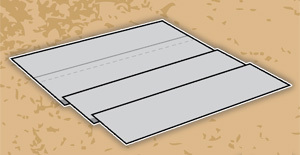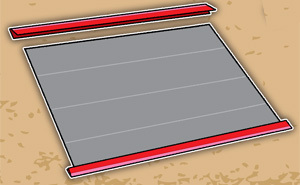
This week I was in the mood for trying something new so decided to try my hand at a cool pattern I’d come across online for a recycled menswear mouse. I picked up a box of menswear fabric samples at this cool place called Resource Rescue in Bayswater about 6 months ago and have been waiting for the ideal opportunity to put them to use – and this was it!
After rifling through the hundreds of samples at my disposal I came up with these three:

If you want to make a mouse like this then you’ll need to download the template here. I personally found the instructions a little lacking and had a few frustrating moments in the creation of my mouse as a result. So I thought I’d re-write them for anyone else keen to have a go:
Step 1:


Print the pattern pieces, and cut out. Using the pattern as a guide, cut out 1 bottom piece and 1 side piece from the same or different fabric. Flip pattern, and cut out another side piece. For a tail, cut a 1-by-4-inch strip on the bias. (mine has a bit of paper stuck on it – just ignore that!)
For ears, cut out four pieces of fabric using the pattern as a guide. Place two of the pieces back to back, right sides out and roughly sew a seam around the edges so they are tacked together. Repeat for the other ear. (The original pattern calls for using fusible webbing with the ears, but that is a bit much effort for me for a “quick” project like this.)
Step 2:


Next I sewed the body pieces to the bottom piece (right sides together) leaving a one-inch ish sized opening at the back of the mouse, ready for the tail and so that the mouse could be turned right sides out and stuffed. I don’t use pins for things this small and just guided the fabric with my fingers, pulling it into place as I went – but if you want to use pins that will also work.
Note that the bigger end of the body pieces should be sewn to the wide end of the bottom piece – I made the mistake of originally sewing them together the opposite way – which did not work!
Step 3:


The original pattern calls for: “Fold tail in half lengthwise, right sides facing; stitch with a 1/4-inch seam allowance, leaving ends open. Turn tail right side out using loop turner.” But I tried this and my scrap menswear fabric was way too stiff for turning it back right side out was impossible. Instead, I ended up folding the tail fabric in half lengthwise, right sides on the outside and stitching haphazardly up and down until I was happy with how it looked.
Step 4:


Turn body right side out, and stuff with fill. The fill I use is generally just the pieces of fabric so minutely small that they can serve no other purpose in my creative pursuits other than being upcycled stuffing for projects like this. I collect them as I cut out pieces for other projects. Once you mouse is stuffed to your desired firmness, insert the tail into opening and hand-stitch closed. Knot end of tail.
*FYI please excuse the horrendously awful handstitching on my mouse. I’ve never been big on handstitching and haven’t given it the attention that it really deserves considering how often I’m sewing and creating.
Step 5:

Fold ears in half, and attach to body with small hand stitches. Mark placement of eyes with pins, and then embroider eyes and nose using backstitches.
**FYI I ran out of patience with handstitching and eventually decided that my mouse would have ears, but no eyes or nose. I’m tempted to draw them on with a sharpie but also kind of like the lack of detail. In any case, don’t feel as though mouth and eyes are mandatory – they aren’t.
Step 6:

Admire your completed mouse!
You might have gathered by now that while I enjoyed making this mouse, it is definitely not something I want to experience making again! Way, way too much fiddly handsewing involved for my liking.
My problem now is that I’m still faced every day with this large box of mens suiting fabric samples:

I have NO idea what to use them for now. Any ideas?





















































